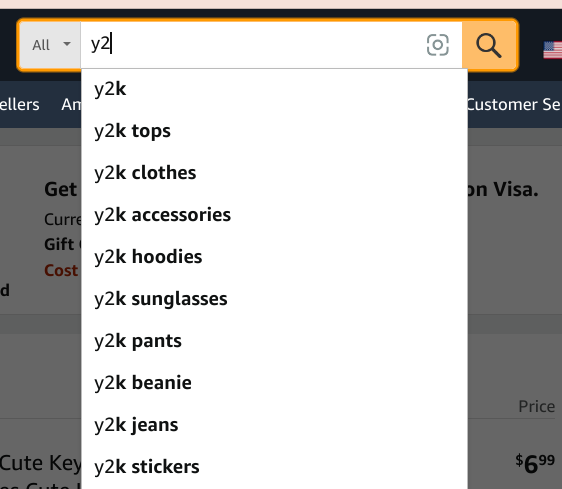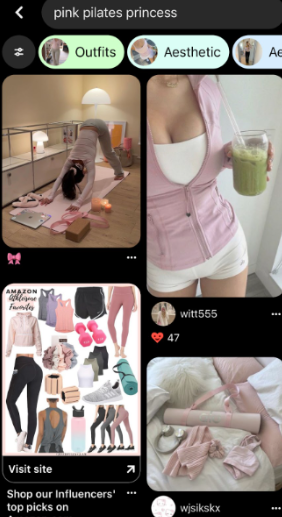
When walking into a Linganore classroom, one may be bombarded with the sight of 2024’s new trendy water bottle, the Stanley 1913 tumbler, littered across desks and shoved into backpack pockets. Four years ago, classrooms across the country would have provided a similar sight, except for one thing. The reusable water bottle craze at the time featured the Hydro Flask.
People have been influenced by pop culture trends for as long as pop culture has existed. According to the Style and Beauty section of Forbes, fashion trends have cycled every 10 to 20 years, a phenomena known as the “20-year-rule.”
However, with the uprising of social media and online shopping sites where one can mass-buy products for cheap (such as Depop and Amazon), these trends may be cycling faster than ever before, and have been dubbed as “microtrends”.
An article from The Buzz touches on a number of these microtrends usually associated with a specific year and season. They write, “Chunky colorful rings are so Summer 2020. Hibiscus-printed dresses are so Spring 2021. North Face puffer jackets are so Fall 2022. Typically, every season births a new litter of trends, but now the quarterly seasons are shortening to singular months, or even scarier, just weeks.”
Typically, every season births a new litter of trends, but now the quarterly seasons are shortening to singular months, or even scarier, just weeks.”
— The Buzz
One may wonder, how did this happen?
Social media plays a significant role in how Gen Z users shop and how trends are created or proliferated.
Kids and teens may be persuaded to buy a product if they see one of their favorite influencers promoting it, even if it is out of their price range or they do not need (or even want) the product. According to Luth Research, 71% of consumers are more likely to make a purchase based on a social media reference.
Kids and teens are also more likely than adults to be persuaded to buy or engage in these trends after seeing a product on social media.
Allen Kanner, PhD, is a child psychologist and the author of “Psychology and Consumer Culture: The Struggle for a Good Life in a Material-istic World,” where he explores the psychological effect of overconsumption from a number of different lens.
“By the time children reach their teens, a developmental stage when they’re naturally insecure and searching for a personal identity, they’ve been taught that material possessions are what matter,” Kanner said in an interview with the American Psychological Association.
According to Insider Intelligence, 44.7% of TikTok’s and 33.7% of Instagram users are a part of Gen Z.

Due to this phenomenon, and the younger generations dominating popular social media apps such as TikTok that promote these products, this microtrend culture has taken off.
Another factor in consumer culture is the rise of “cores” and “aesthetics,” mainly popular among teen girls on apps like Instagram and Pinterest. Many teens might be familiar with terms such as cottagecore, old money, pink pilates princess, coquette, etc. All these aesthetics rely heavily on certain imagery and clothing items to portray the desired look and lifestyle.
Although being a part of one of these subcultures can be a positive way to find a community and explore ones style, they can also be destructive, leading to people thinking they need to purchase a certain item in order to fit in with their aesthetic group and exacerbating consumer culture. And with the “core” or “aesthetic” that is in the spotlight rapidly changing, these items can be easily discarded only a few months or weeks later.
The rise of online shopping and the fast fashion industry also plays a large role in the microtrend culture.
In a survey from Agility PR Solutions, a media monitoring and public relations website, in a survey from spring 2023, 57% of teens use Amazon to purchase products online. Purchasing online makes it is easier to mass-buy products.
As a result, fast fashion industries that sell items online such as Shein are now booming. Websites such as these stir controversy in the industry as they allegedly rely on unethical work practices such as child labor, (from Brightly ), disposing clothing into landfills ( CBS News ),stealing designs from small business (The Guardian) and producing huge amounts of cheaply-made clothing, all to adhere to the rapidly-changing microtrends.
According to Asharq Al-Awsat, a new bill has been proposed in the French Parliament targeting Shein and other fast fashion brands. According to the bill, on average, Shein has more than 7,200 new garments available every day.
The bill states, “This evolution of the apparel sector towards ephemeral fashion, combining increased volumes and low prices, is influencing consumer buying habits by creating buying impulses and a constant need for renewal, which is not without environmental, social and economic consequences.”
It is not the products themselves that are the issue, or the fact that teens are participating in pop culture trends or sharing similar likes and dislikes. In fact, there is nothing wrong with using a Stanley tumbler, wearing a Lululemon Align jacket or using Sol De Janeiro products. The problem arises when people mass-buy products, simultaneously driving the price, only to stop using them when they are no longer considered “cool” anymore. This leads to a waste of both money and materials.
So what is the solution?
Patricia Moses, a junior at Linganore, spoke about how she manages her spending money.
“Before purchasing an item, make a list of ways and times you would actually use the item,” said Moses. “If the product is a clothing item, imagine at least three outfits including said item and think of how likely you are to wear the outfit.”
One popular solution to overconsumption of clothing is to have staple pieces in one’s wardrobe or a ‘capsule wardrobe.’ A ‘capsule wardrobe’ is a collection of clothes that are easy to style and can be worn for a variety of events and seasons. Although this will mean you have fewer items in your closet, these pieces will generally be better made and higher quality since someone is able to invest more in their purchase. As a result, these pieces can last for years to come.
In an online blog, The Thread, written by Kelly Olson, a stylist from Oregon, “Maintaining a core collection tends to change your shopping habits. You buy fewer things, and you really consider your purchases. What you do buy is better quality.”
Buying items secondhand can also be a good way for someone to save money and resources. When buying items secondhand, there is no waste spent on manufacturing an item again or packaging items with excessive plastic. Prices are often also much lower and support the community instead of large brands with potentially unethical practices such as Shein.
Leila Durrie, a journalist for The Communicator, said in her article Why I Thrift, “Thrifting isn’t only a hobby; it’s a way to practice sustainable living.”
“Thrifting isn’t only a hobby; it’s a way to practice sustainable living.”
— Leila Durrie
At the end of the day, the most important thing is to only buy products that are truly needed or wanted. Despite what the product is, the only real value it has is the value that pertains to the individual.














